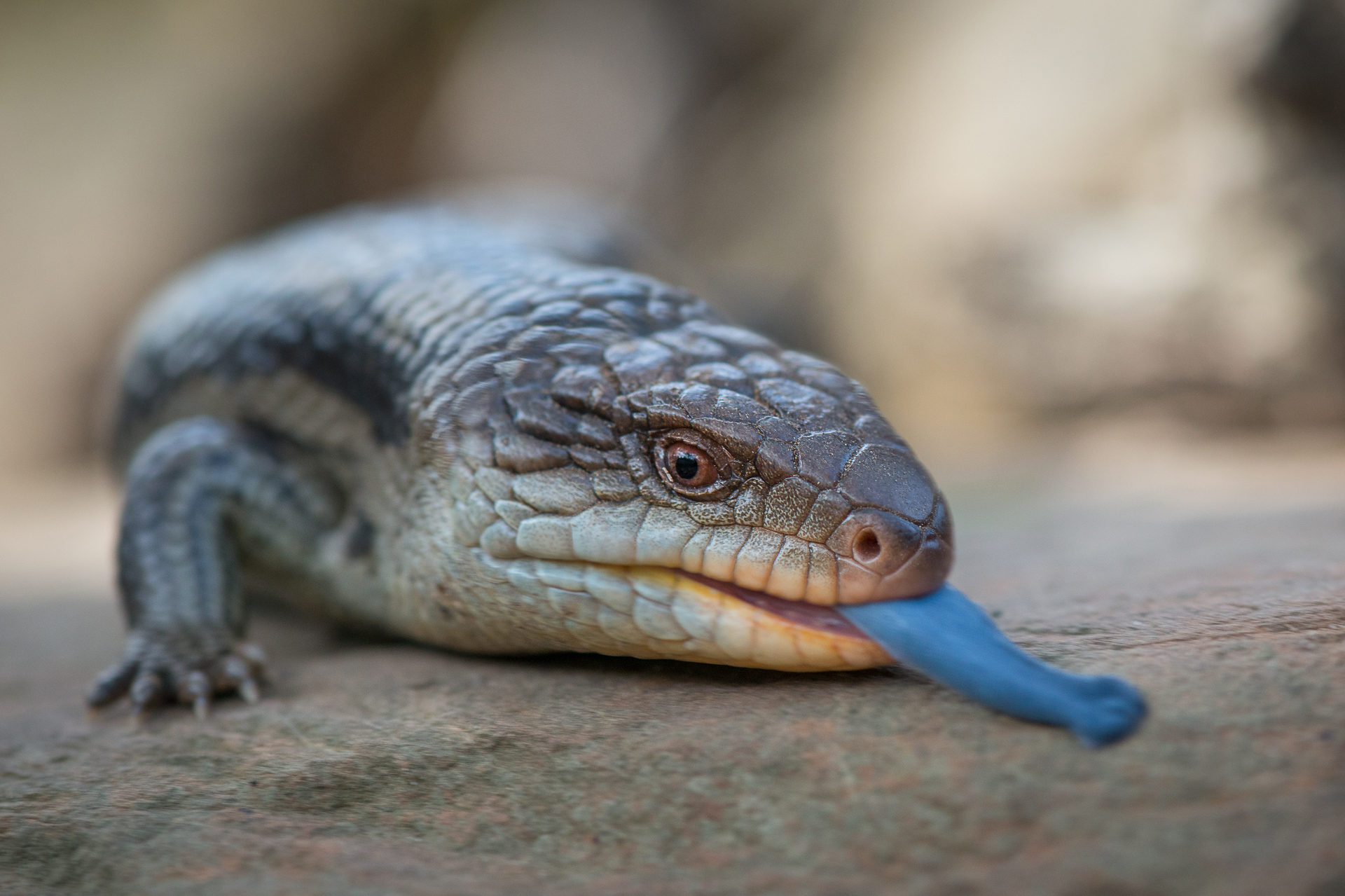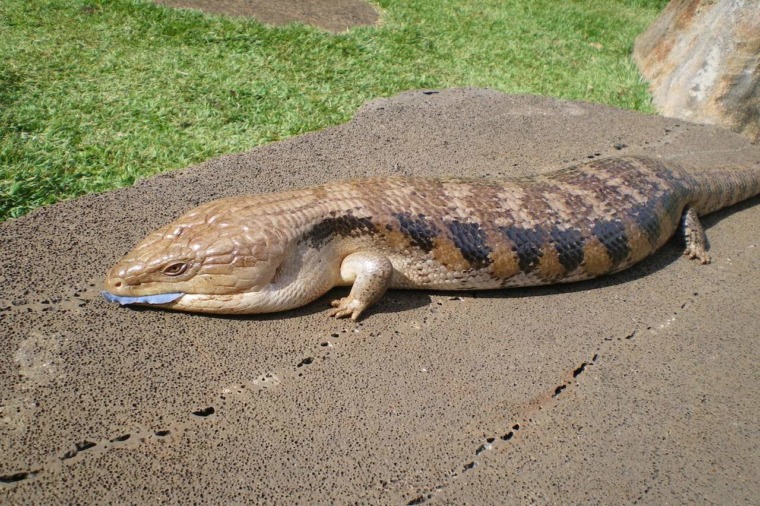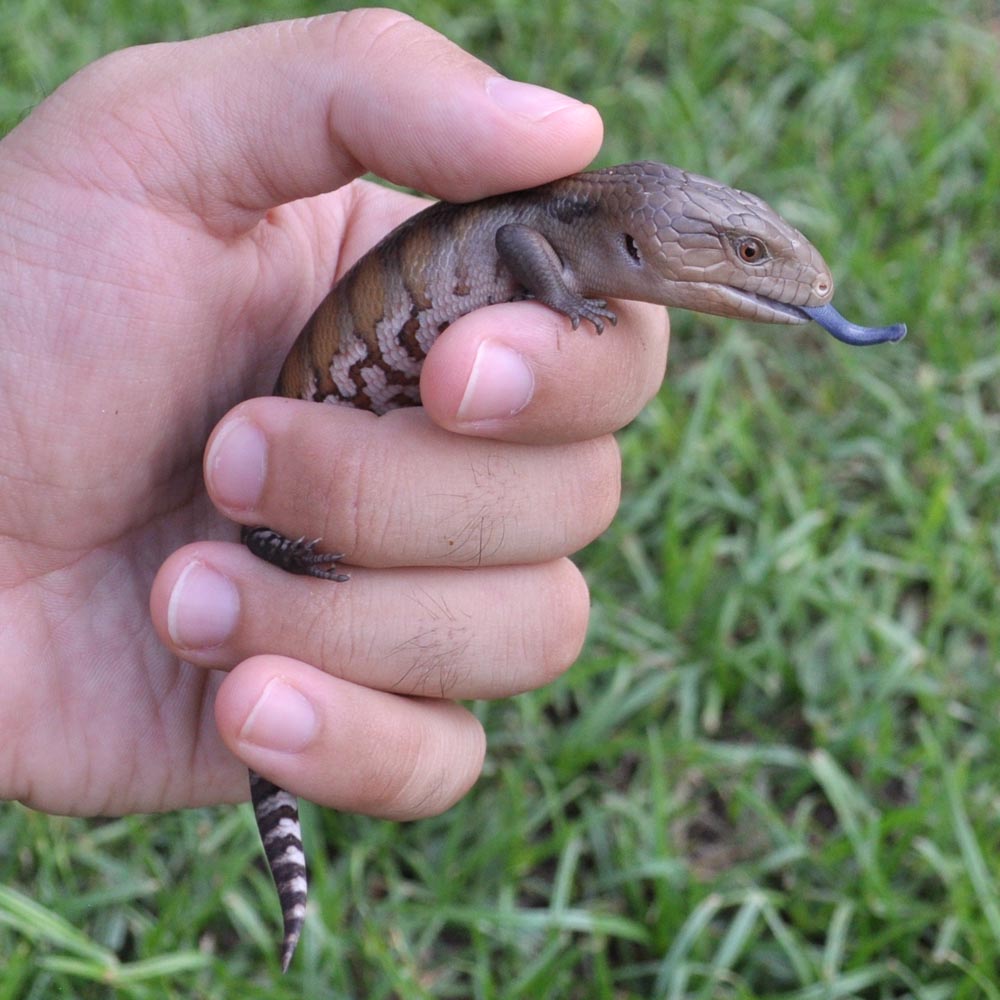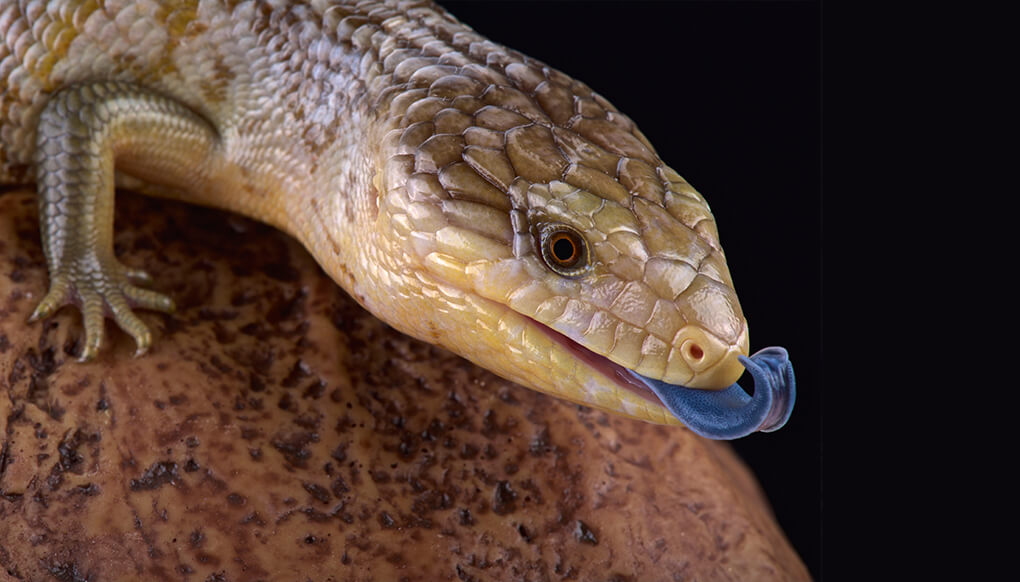
Blotched BlueTongued Lizard Sean Crane Photography
Common or Eastern Blue-tongue Lizard ( Tiliqua scincoides scincoides ): this one is widespread in the south east of Australia and looks just as described above, grey with dark stripes. Northern Blue-tongued Skink ( Tiliqua scincoides intermedia ): belonging to the same species, this form is at home on the savannahs of Australia's tropical regions.

Blue Tongue Lizard, Australia
The eastern blue-tongued lizard ( Tiliqua scincoides scincoides) is a species of skink in the genus Tiliqua. The Tiliqua scincoides scincoide s can also be called the common blue tongue, the eastern bluetongue, the eastern blue-tongued lizard, or skink. [1]

The Blue Tongued Lizard Australian native animals, Australia animals, Blue tongue skink
Did you know that Blue-tongue Lizards have a defense mechanism to protect them from predators who grab them? They self amputate or "drop" their tails to.

BlueTongued Skink Honolulu Zoo Society
Bob-Tailed Blue Tongue Lizard . Wikimedia Commons. This lizard, also known as Tiliqua rugosa, is a species of blue-tailed skink endemic to Australia. Its tail looks a bit like its triangular head.

Australian BlueTongue Lizard (Warning 6 images) Nature and Wildlife Photography Forum
Some individual Blotched Blue-tongue Lizards may weigh more than one kilogram. Identification. Blue-tongues have a long body, large head and short legs and toes. The tail is shorter than the body and generally tapers evenly to a point.

lizard skink AT&T Yahoo Search Results Blue tongue skink, Australian native animals, Fun
Tail Length: About 50-75% of snout-vent length . Data sources: Cogger (2014), Wilson and Swan (2017), *Hoser (1989) General Appearance.. Similar to other lizards, blue-tongued skinks have a network of blood vessels just under the surface of their scales that helps them regulate their body temperature.

Classic Indonesian Blue Tongue Skink gbserpentarium
Baby blue-tongues don't need rescuing. They are born independent. Like the French, blue-tongues see snails as a delicacy. So don't use snail pellets around your yard. If a poisoned snail is eaten by a blue-tongue, the lizard could die. Be careful when you use lawn mowers and whipper snippers. Lots of lizards are killed or injured by them.

Bluetongued Skink Facts, Habitat, Diet, Pet Care, Babies, Pictures
The Blue-tongued lizard (Tiliqua scincoides) is a large species of skink found only in Australia and an island in Indonesia. Due to their characteristic blue tongue and their curious nature, Blue-tongued lizards are popular companion animals in Western countries. B starts with Appearance

UNE Discovery 🦎 Our mystery guest is the Eastern Blue Tongued Lizard.
Blue-tongue lizards are one of Australia's most familiar reptiles, and provide a valuable pest control service to your home, snacking on snails, caterpillars, insects and other garden pests.

Eastern Bluetongue Lizard The Australian Museum
Eastern blue-tongued skinks generally shy (Cronin 2014) May avoid areas used by high numbers of humans and domestic dogs (Dutson and Dutson 2016) Skink injury and mortality In New South Wales, Shine and Koenig (2001) report over 8,900 T. scincoides "rescues" over a 10-year period

Blue Tongue lizard Stumpy tail Australia Stock Photo 241048 Alamy
A tail that can be shed and regrown; Genus Tiliqua (Wilson and Swan 2017, and as noted) Large, robust-bodied lizards Largest members of Scincidae (Abbate et al. 2009). Common, eastern, or northern blue-tongue(d) skink or lizard; "blue-tongues" (English) (Wilson and Swan 2017)

Your Blue Tongue Skink Care Starts With These Steps The Critter Depot
Tiliqua rugosa, most commonly known as the shingleback skink or bobtail lizard, is a short-tailed, slow-moving species of blue-tongued skink (genus Tiliqua) endemic to Australia. It is commonly known as the shingleback or sleepy lizard.

Australia Bluetongue Skink Travel2Unlimited
Blue-tongues skink species are generally docile, gentle, quiet and easily tamed, and can make a good reptile pet for beginners. Although they are not aggressive, they have strong jaws and teeth, meaning that a bite from a skink can be painful. It is advisable not to startle or provoke them, as they may bite if they feel threatened. [12]

Bluetongue Lizard a prominent characteristic of the genus is a large blue tongue that can be
Blue-tongued lizards are the largest of all the skinks. They can grow up to 60 cm long. They are usually grey with broad brown stripes across their back and tail, and of course their most unique distinguishing feature is their blue tongue. Where do they live? There are six species of blue-tongues in Australia. The most common types are:

Tiliqua scincoides displaying the characteristic blue tongue. Pet Lizards, Reptiles And
The Blue-tongued Skink refers to a family of reptiles comprising the Australasian genus 'Tiliqua', which in turn contains a few of the largest members of the family of 'Skink'. They have a characteristic blue tongue and are mainly the inhabitants of Australia, where they are widely popular as house pets. There they are also known as 'blue-tongued lizards' or just 'blue-tongues'.

BlueTongued Skink Care Sheet Reptiles' Cove
Tiliqua scincoides Meet the bluetongue, a slow-moving lizard with a stocky body and docile disposition that's also the largest of Australia's skinks, of which there are more than 320 species. Skinks are smooth-skinned lizards that are well-known for dropping their tails - known as autotomy - when threatened by a potential predator.